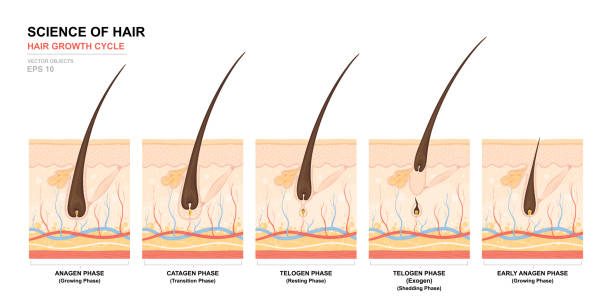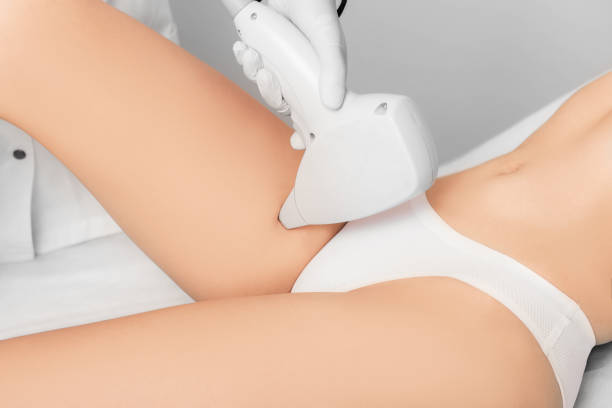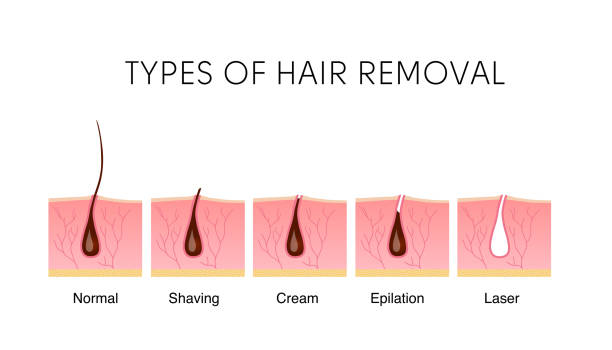Hair Removal, IPL
How many laser hair removal treatments are required to permanently remove hair?
Table of contents
Inward growing hair? Burns from wax? No thanks! If you are one of the many who feel that unwanted hair is the bane of your existence, it might be a good time for you to consider laser hair removal.


Ditching the razor and avoiding frustrating beard stubble just days after shaving sounds like a dream, but for many it is just that - a dream. To have such soft, touchable skin without a hair in sight is something many people wish for. Unless you like body hair, which is also totally cool, but if you don't, you know how annoying it can be.
Laser hair removal is an effective hair removal method loved by many because it penetrates deep into the skin to eradicate unwanted hair at the source – the hair root. To be treated with laser however, is not as simple as just walking into your local beauty salon and walking out twenty minutes later with perfectly hair-free skin. Why you may wonder? Because laser hair removal takes time and quite a few sessions to achieve complete removal of unwanted hair.
How many sessions? Let's find out!
Why do you need multiple sessions of laser hair removal?
Many people considering laser hair removal ask why multiple sessions are required. If laser hair removal works so well, why can't the entire treatment be completed in one simple session? To truly understand this, it is important to first understand how hair grows.
Did you know that there are three hair growth cycles? Laser hair removal is extremely effective, but it can only successfully treat unwanted hair when the hair is in the correct cycle.
The three hair growth cycles are as follows:
Anagen. The first phase of the three is called the anagen phase and is the phase where the hair is most visible in the hair growth cycle. The follicle is most exposed at this stage because the hair is above the skin - therefore at this stage it is like laser works best. The laser can target the hair and travel down to the root and destroy it.


Katagen. Catagen stage is the next phase between the growth stage (anagen) and the resting stage (telogen). During the catagen phase, the hair leaves the papilla (bottom of the follicle), where the hair is attached. This is when you lose the hair, which naturally comes out when you treat your hair or sleep. Laser hair removal treatment usually does not work during this stage because the hair becomes loose before the laser can travel down into it to reach the follicle. This is the shortest phase of the three and only lasts 2-3 days.
Telogen. During the last telogen phase, also called the resting phase, the hair remains in the root until it is pushed out by the growth of a new anagen hair. This is the root's resting phase and can last anywhere from a few days to a few months while the new hair grows. Laser hair removal treatment may not affect the follicle at all during this stage.
For this reason, laser hair treatments are at 2-4 week intervals, depending on what your skin therapist or technician thinks you need. By spreading out the sessions, you give your hair enough time to move from one stage to the next to help get rid of it completely. Now, it's important to remember that some hair can stay in the final telogen stage for several months at a time, so some patients may see a little hair growth unexpectedly many months after their series of laser sessions.
Okay, so how many laser hair treatments are needed for permanent hair removal?
In short, it varies. In addition to how your hair grows, the number of hair reduction treatments required depends on a few factors such as genetics, age, medical problems, medical prescriptions and even hormonal factors. However, most people can finish their first set of treatments there within 4-6 weeks and there is no more (or minimal) regrowth.
Why maintenance treatments with laser hair removal are necessary
Laser hair removal treatment is often touted as a permanent solution when it comes to unwanted hair, so why are maintenance sessions required after your first series of sessions to get rid of the hair? There are two main reasons for this.


The first reason is due to the last telogen stage. As we mentioned, this stage can last quite a long time and happens to be the stage where lasers are most ineffective. So to achieve total removal of unwanted hair, you need to wait for this phase to end so that the anagen hair can start up again. Remember to laser can only eradicate hair from the root in the anagen phase. That being said, it can take several months or even years to completely destroy all the hair follicles in a specific treated area.
The second reason is that your hair follicles can heal after some time, which promotes hair growth. With proper nutrition, self-care and time, your body will try to repair the damaged hair follicles. Without maintenance treatments, patients may begin to experience thinner and lighter hair growth a year or two after their first treatments. Maintenance treatments are crucial to maintaining the level of removal in your treated area.
However, with this in mind, if you don't mind a little hair growth, you can maintain your hair-free lifestyle in a treated area with light shaving. The hair growth will never go back to the level it was before your laser treatments were performed, no matter where it is - the chin, the upper lip, the legs or anywhere else. In fact, the hair that does grow back will be thin and quite sparse.
Your appointment for laser hair removal
If you feel a little intimidated by the sound of lasers penetrating deep into the skin to eradicate the hair follicle to destroy hair growth - don't worry! It's not as scary as it sounds.
The visit to the clinic for the treatment usually does not take too long, although this depends mainly on the size of the area to be treated. Large areas such as the back and legs usually take an hour while smaller areas such as the upper lip and chin or even the bikini line only take a few minutes.
Själva behandlingen är faktiskt ganska enkel. Du blir ombedd att sitta eller ligga ner och en kylande gel appliceras på det område som du vill bli behandlad. Detta kommer att skydda din hud från laserns värme samtidigt som den kan färdas djupt under huden för att förstöra folliklarna. Efter att gelen har applicerats appliceras lasern på huden, där den ”zappar” det behandlade området.
”Zappar” undrar du? Innan du springer iväg och tror att lasern känns som en smärtsam elchock, kan du ta ett djupt andetag, för det känns relativt smärtfritt. Om du frågar någon som har genomgått behandlingen kommer de att berätta att det i huvudsak känns som ett varmt nålstick eller som att ett gummiband knäpper mot huden. Pigmentet melanin från håret drar till sig laservärmen, och energin färdas ner i håret till roten, som sedan förstör follikeln. Hela området kommer att behandlas för att rikta in sig på så många av de små sårbara hårsäckarna som möjligt.


How to prepare for a laser hair removal treatment?
Good question. Once you have gone through the first laser consultation, you can start preparing for your first session! Your laser hair removal specialist will ask you to do the following:
Shave. It is important to shave the treated area 24 hours before your session to avoid the laser burning long hairs, which can cause a burn on the skin. No waxing, plucking or tweezing! You cannot laser treat hair that is not there.
Avoid sunburn. Believe it or not, sunburned skin can make your session less effective because it reduces the pigment difference between your skin tone and hair tone. It also makes your skin sensitive and more vulnerable to damage. So minimise your sun exposure and cover the treatment area with sunscreen (except on the day of the treatment itself - see below!).
At this point, hair colour, skin type and skin tone make a difference in terms of how effective the laser light can be. People with darker skin may not get as good results as those with fair skin, or they may even experience negative side effects if the wrong type of laser is used. In addition, dark hair absorbs the laser (and therefore the treatment) best, so people with lighter hair may also need tailored treatment. Make sure you consult a board-certified dermatologist to ensure your treatment plan is tailored specifically for you.
Avoid beauty products. On the day of your laser session, make sure you don't use any products on your skin as this can affect how the laser penetrates the hair follicle. This means not using skincare products, deodorant, lotions, perfume, moisturiser and even sunscreen.
It is of utmost importance that you follow these tips before every single treatment in order to hair removal with laser - not just the first one.
How to compare IPL devices at home?
If you're not interested in getting professional laser hair treatment, you're in luck! IPL stands for Intense Pulsed Light and has received much positive attention for being an effective method of removing unwanted hair - all from the comfort of your own home!
Vivre IPL for hair removal is the world's foremost IPLhome use handset that has helped thousands achieve not only hair-free skin, but also a reduction in pigment discolouration.
If you decide to go this route for your hair removal needs, be sure to do your preliminary research and buy from an honest and reputable company like Vivre with a passion for providing people with a way to safely and effectively get rid of unwanted hair!
Final salts
So how many laser hair removal treatments does it take to permanent hair removal? The answer is: it depends. Factors such as hair growth, genetics and hormonal changes affect the number of sessions needed, and it can sometimes take a few years before you see permanent hair removal. But once you reach your ultimate goal of flawless hair-free skin, you can throw the razor and shaving cream in the trash, because you simply won't need them anymore!

